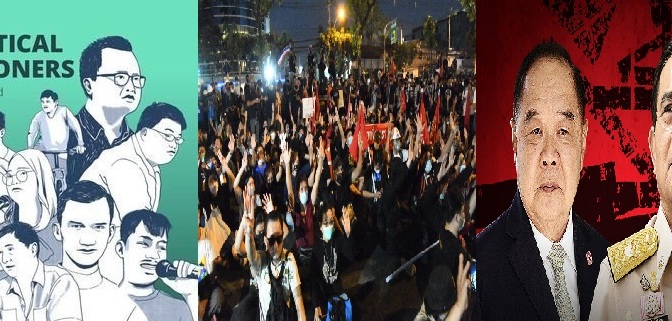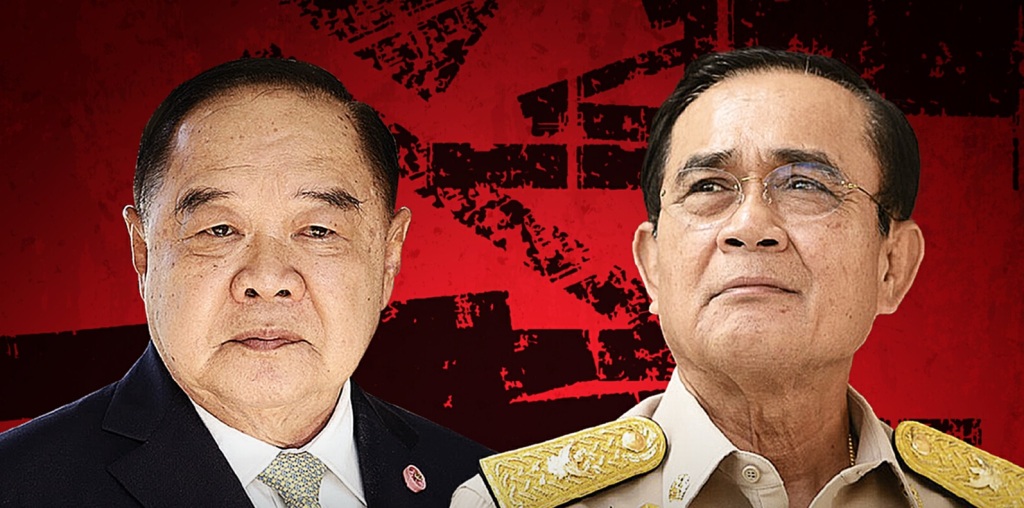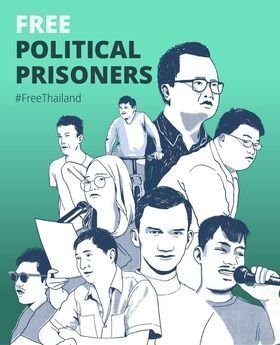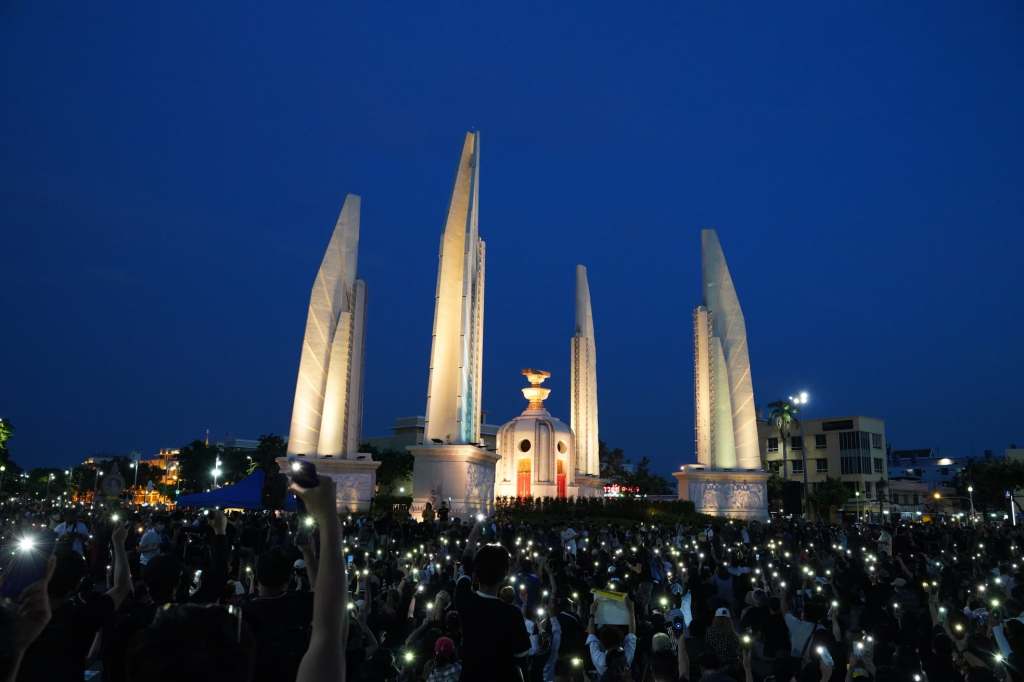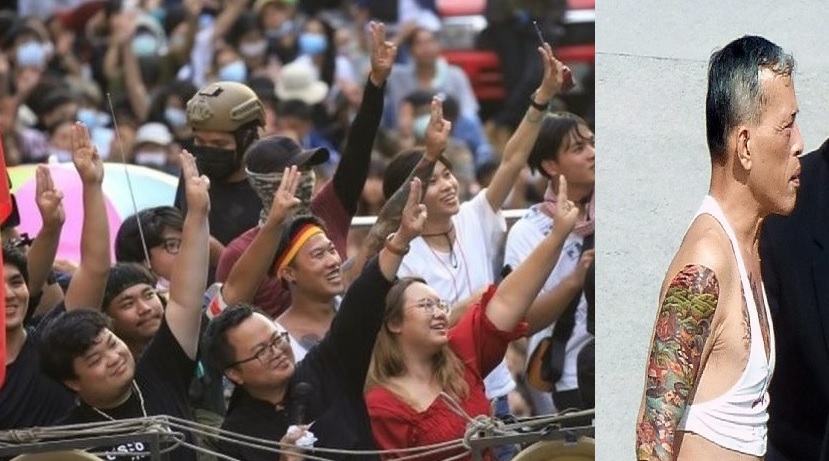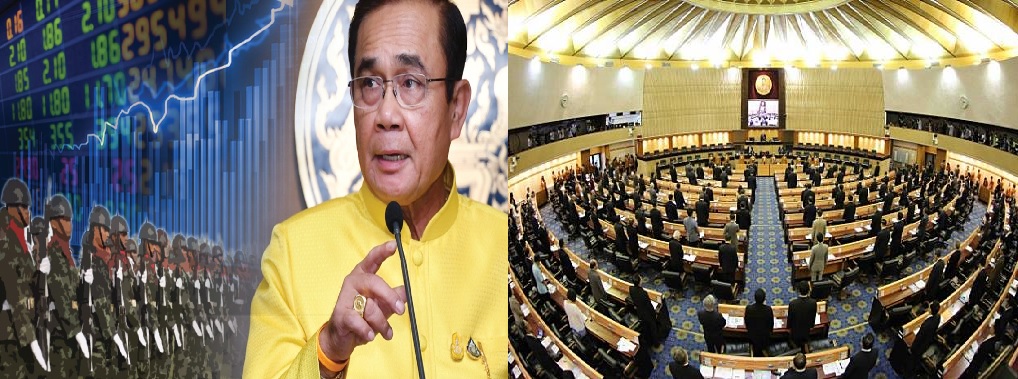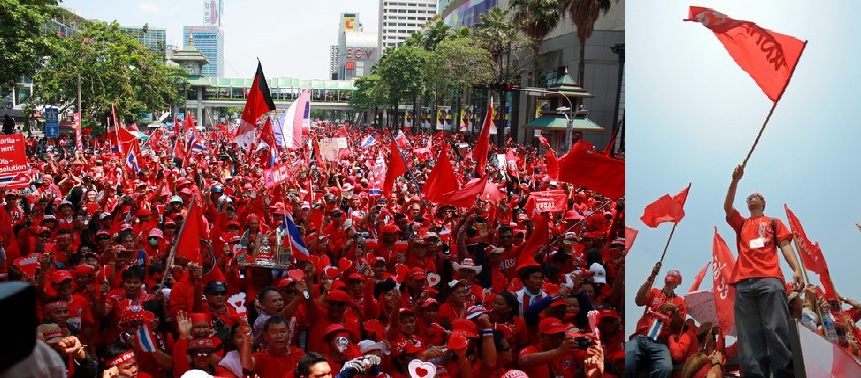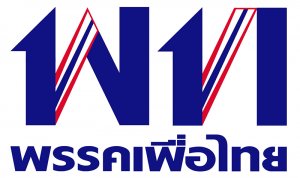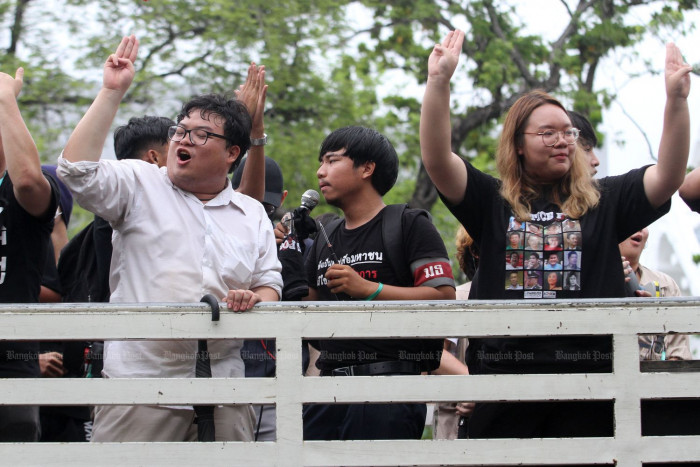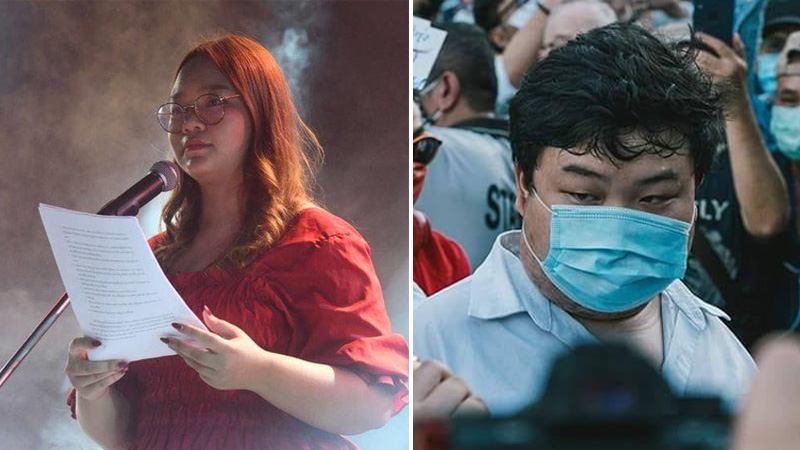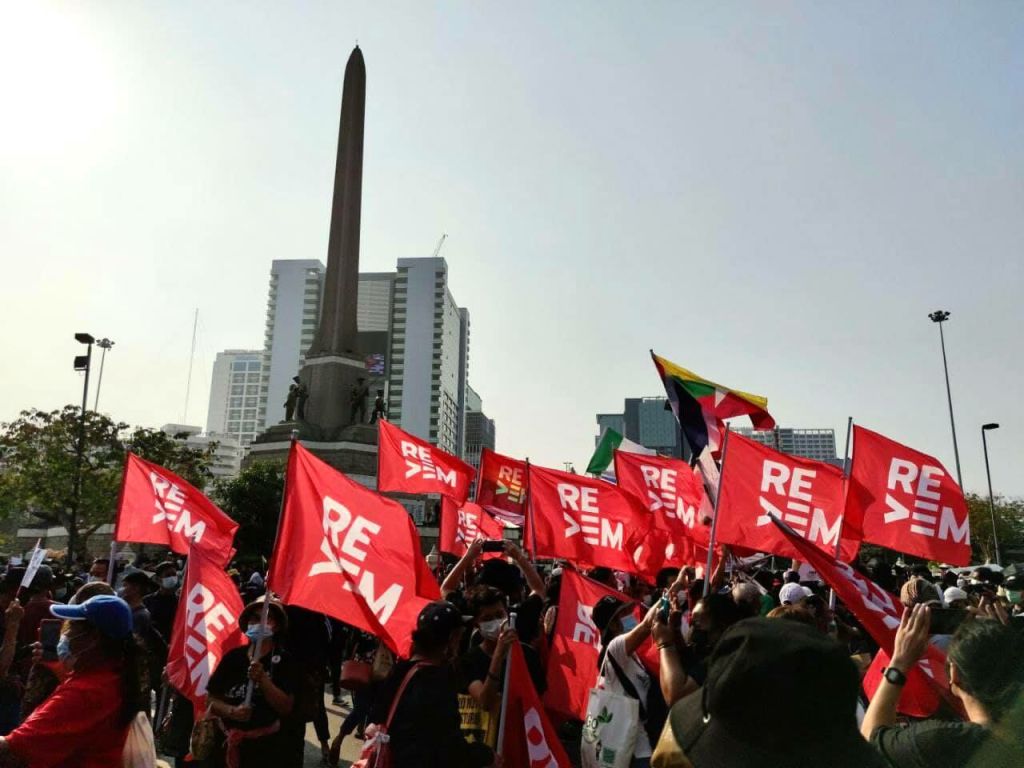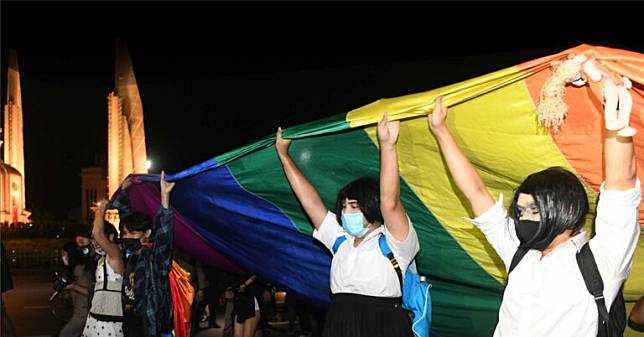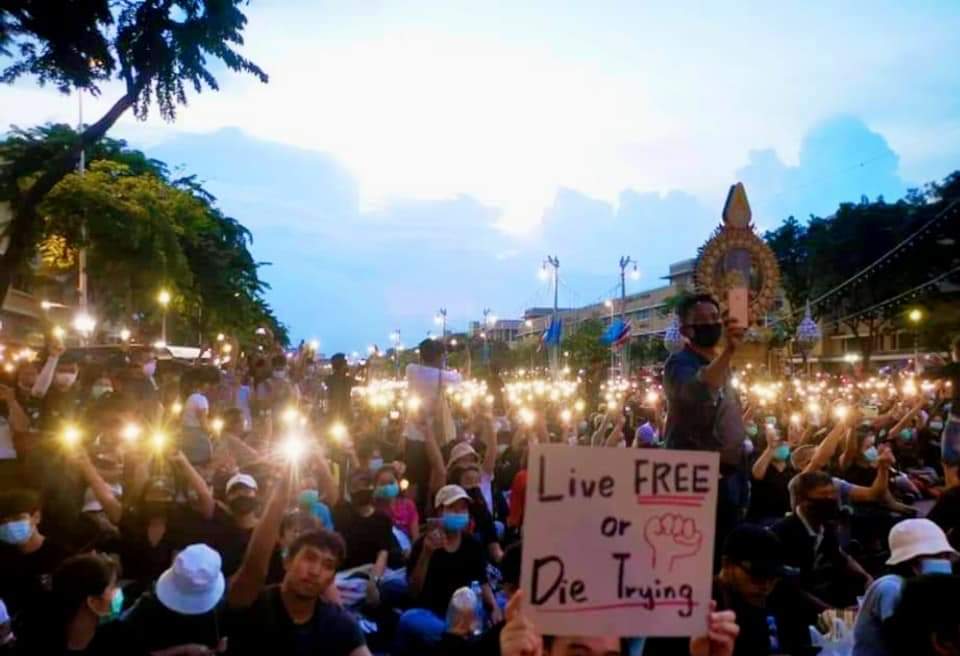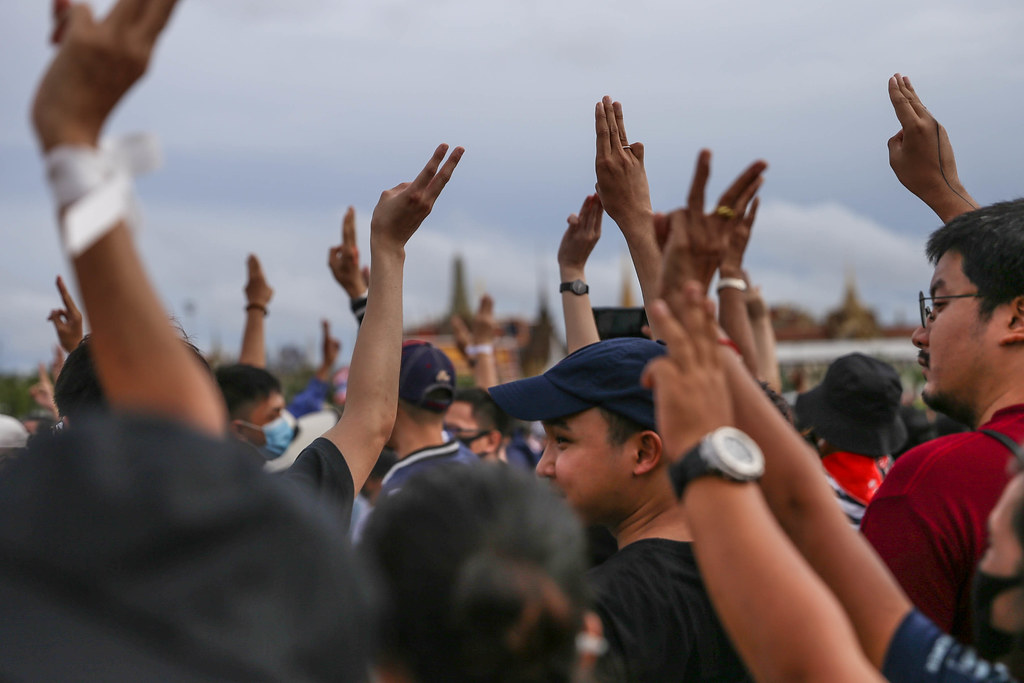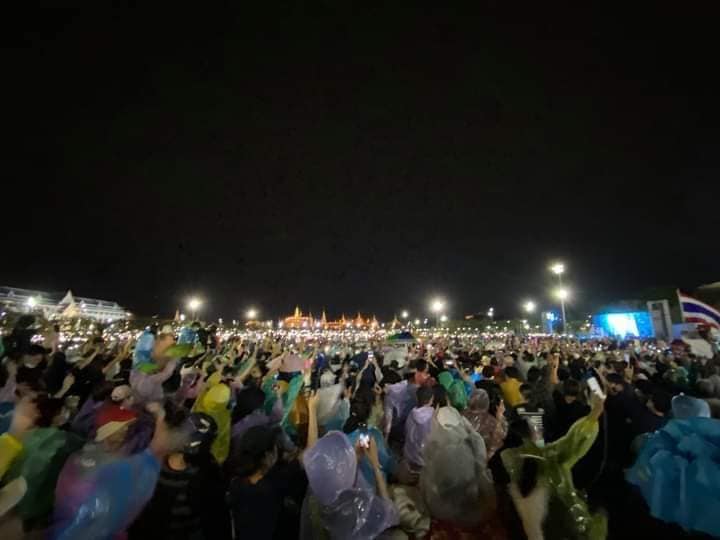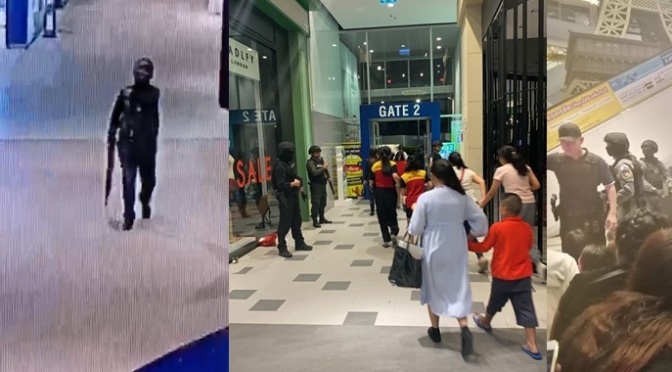The youth movement for democracy against Generalissimo Prayut’s dictatorship in Thailand has been defeated and key leaders and activists are facing draconian charges which have long prison sentences attached to them.
This defeat has been clear for some time, and given the length of time that has passed since the last significant protest, we can say this with certainty. There are still small symbolic signs of resistance and recently there was a Red Shirt gathering to remember the massacre by soldiers under the command of Prayut and Abhisit in 2010, but this Red Shirt gathering was more commemorative than an aggressive protest against the state crimes. This does not, however, mean that the fight against the dictatorship cannot be revived in the future, but meanwhile we need to assess the reasons for this failure.
Firstly, we need to take a historical look at the present crisis of democracy in Thailand.
The political crisis and unrest which we have seen in Thailand since the 19th September 2006 military coup against the elected Taksin Government, represents a class war between, on the one hand, the rich elites and the military, along with the conservative middle classes, and, on the other hand, the urban working class and rural poor, joined more recently by the new generation of young and progressive-minded youth. This class war has turned Thailand upside down and raised important political questions about the roles of many institutions.
However, it is not a pure class war and those taking part have different aims and different concepts of Democracy. The class lines are not clear cut either. Twenty years ago, due to a vacuum on the Left since the collapse of the Communist Party of Thailand (CPT), millionaire and populist politician, Taksin Shinawat and his Thai Rak Thai Party, managed to inspire millions of ordinary Thais with many pro-poor policies. Later, after the 2006 coup, he provided leadership to the Red Shirt movement, Thailand’s largest pro-democracy social movement. More recently, ever since Generalissimo Prayut’s military coup against Yingluck’s elected government in 2014, other actors have appeared. Pro-business liberal tycoon Tanatorn Juangroongruangkit and his Future Forward Party, inspired many who saw Taksin as being too domineering and also making too many compromises with the elites. Later, the Future Forward Party was forced to metamorphose into the Move Forward Party after conservative judges dissolved the party.
In the last couple of years, a radical youth movement, independent of both Taksin and Tanatorn, emerged onto the streets and at its peak managed to mobilise tens of thousands of people against the dictatorship. This movement also “normalised” criticism of the Wachiralongkorn monarchy. [See my article “Youth-led movement challenges the junta and the monarchy” https://bit.ly/3OwebKy ]. But Prayut’s military government hit back with severe repression and the youth movement became isolated and eventually defeated.
For an overall historical view of the crisis, see my book “Thailand’s Crisis and the Fight for Democracy” (2010). http://bit.ly/1TdKKYs .
Since 2006 it has taken the military, and the other conservative elites, 13 years of manoeuvring between bloody repression, the use of military controlled courts, and fixed elections, in order to stabilise the present system of “Guided Democracy”, which we now see in Thailand. [For further reading see my article “Guided Democracy after the flawed 2019 Election: Continuing Junta, Elite Politics, Myths about Wachiralongkorn and the Need to Build Social Movements” https://bit.ly/2Wm6bzI ].
One of the most significant weaknesses of the pro-democracy movement was the refusal to spread the struggle into the organised working class, which would have raised the potential for crippling political strikes against the dictatorship. This was the case with both the Red Shirts and the youth-led movement. Instead, the struggle merely alternated between street protests and parliamentary strategies, with any emphasis on parliament acting to demobilise the street protests. The parliamentary strategy was flawed from the start, given that the military was prepared to stage coups, and in later years, drew up an authoritarian constitution and electoral rules which guaranteed its power through fixed elections and the use of military appointed senators and judges. [For further reading see my articles “Rubber Ducks cannot defeat the military” https://bit.ly/3p3LlnI, “Warning signs for the Democracy Movement” https://bit.ly/3KcwHEq and “Parliamentary manoeuvres cannot bring about democracy” https://bit.ly/3MmdpOw ].
Another significant weakness for both the Red Shirts and the youth-led movement was the lack of a radical political party, dedicated to the building of a genuine grass-roots pro-democracy social movement. When looking at the entrenched power of the military and the elites, it is clear that some kind of political revolution is required to bring about democracy. Furthermore, a social revolution would be required to end the gross class exploitation and inequalities experienced by most ordinary Thais. Any mainstream liberal political party will not be up to this task.
Instead of building a revolutionary party, the Red Shirts were too dominated by the politics of Taksin’s political parties, the latest version being the Pua Thai Party. This brand of politics looked to make compromises with the elites and to tone down the level of struggle, channelling people towards elections.
When it came to the youth-led movement, they rejected the idea of political leadership, pretending that they were participating in a spontaneous movement. The “we are all leaders” strategy meant that it was difficult to have serious and democratic discussions about the way forward because no democratic structures existed within the movement which could encourage participation in decision making. The top protest leaders become de facto unelected leaders. This was not because they wished to be authoritarian, but it was an unintended result of the “we are all leaders” strategy. Instead, there could have been mass discussion meetings and elections of a united front leadership committee. The Thai movement was not unique here. The same problem occurred with Podemos in the Spanish State.
Initially the youth protests grew out of isolated symbolic protest groups. Experience forced these groups to start working together. But they were not interested in building a revolutionary party. While turning their backs on the likes of Taksin, in practice, they unconsciously appointed themselves as leaders with no sustainable structures for the movement. This autonomist model of organising meant that when the military-controlled state hit back with repression against the top leaders, the movement collapsed. There was no strategy for responding to state repression.
Naturally, and quite rightly, there were political debates within the youth movement. But there was no mechanism for forging these debates into a clear policy backed by the majority of activists. Tokenistic internet polls, which they sometimes carried out, were no substitute for mass meetings and open debates. There was great confusion about the nature of the tasks facing the democracy movement, with many leaning towards the conspiracy theory that Wachiralongkorn ruled Thailand as an “absolute monarchy”. This meant not paying enough attention on the practicalities of how to crush the power of the military and the conservatives, when the military are clearly the major obstacle to democracy. Protests took on a symbolic nature against the “absolute monarchy” while having no clear strategy for moving towards a republic either. Activists vacillated between hoping that the military-dominated parliament might “reform” the monarchy and calling on organisations like the United Nations to step in. Not enough political theory was created, through debates, about the relationship between the military, the conservative elites and the monarchy. [See my article “Flawed theory about the King’s power: an excuse not to fight the military” https://bit.ly/3kaerRq ]
On a more positive note, the youth movement’s brave criticism of the monarchy broke a long-standing taboo, built on fear, concerning the criticism of the King. Of course, this came at a high price for the leaders, who now face lèse-majesté charges and long jail sentences. Another positive development, brought about by the youth movement, is the idea of self-activity from below and the idea that activists do not have to depend on rich tycoons as leaders. This also led to the growing interest in left-wing ideas among the new generation. Sometimes this has been channelled into dead-end ideas of anarchism, the most prominent being the creation of the anarcho-syndicalist organisation called the “Workers’ Movement”. This was thought to be a “short cut” to building political workers’ strikes. But in fact, the “Workers’ Movement” does not even function as a trade union, not bargaining with employers. It has become a diversion from working inside the existing trade union movement to build political activists and strike action. The one bright spark is the revival and moderate growth of the Socialist Workers group, with a small influx of youth members.
The pro-democracy movement is now experiencing a quiet period. But none of the problems that stimulated the past struggles have gone away. The hope is that future activists will learn from past failures and rebuild, as accumulated anger recharges the movement.
Giles Ji Ungpakorn
